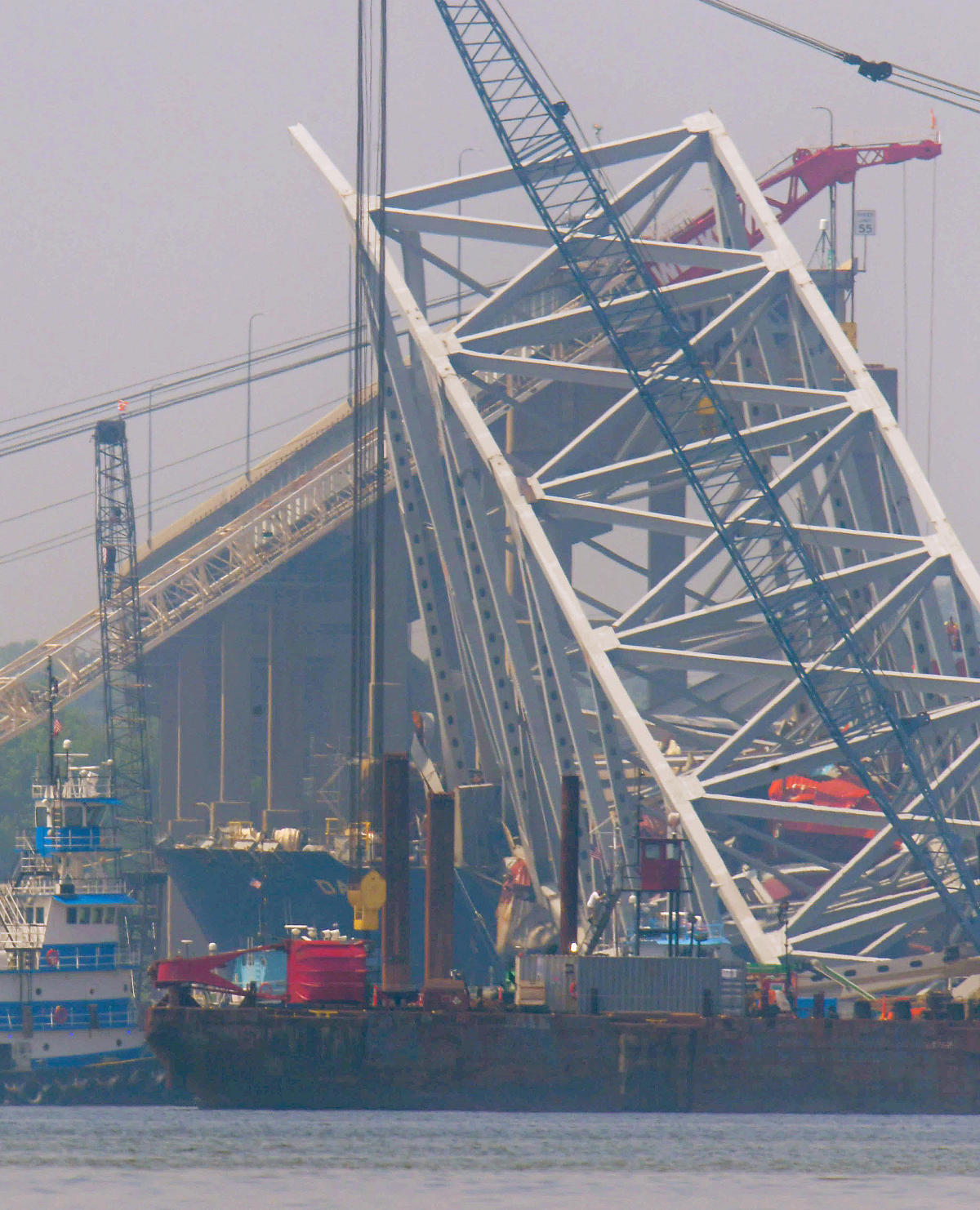BALTIMORE — It will be more than four years before a Francis Scott Key Bridge replacement again connects I-695 over the Baltimore harbor, but by this summer, the state is expected to identify its builder.
During a two-hour virtual forum Tuesday, potential consultants, contractors and subcontractors asked questions of Maryland Transportation Authority officials regarding the new bridge, which is expected to cost between $1.7 billion and $1.9 billion and be completed by the fall of 2028.
Asked whether state leaders will host site tours or one-on-one meetings with interested companies, transportation authority officials said those are “not anticipated” due to the need for a quick timeline. It’s an “aggressive rebuild schedule,” said Brian Wolfe, the authority’s director of project development.
A “request for proposals” (RFP) will be released later this month. Transportation officials said that four to six weeks later, an entity or entities will be selected to build the new bridge.
Democratic President Joe Biden, who is seeking re-election, has pledged that the federal government will pay for the new span. Asked by one of the participants during the forum if any private financing would fund the bridge construction, James Harkness, the transportation authority’s chief engineer, said no. “All the funding for this project will be federal dollars or toll revenue,” he said.
“We are seeking a team that manages costs effectively, provides transparency in financial dealings and stays within negotiated budgets,” Harkness said. “Additionally, the bridge’s design should minimize environmental impacts to the Patapsco River and enhance the visual landscape, serving as a welcoming gateway to the city and Port of Baltimore.”
He added that the bridge should exceed a “75-year service life.”
The Dali, a massive cargo ship, appeared to lose power in the early hours of March 26, hitting one of the former bridge’s piers and knocking it down, killing six construction workers. As of Tuesday, when the body of José Mynor López was located and identified, the remains of all six were recovered.
More than 50,000 short tons of steel and concrete fell into the river. Crews have worked to clear the debris and reopen the deepwater shipping channel into the Port of Baltimore by the end of May. The Dali remains stuck in the riverbed, but within the next week, crews plan to use explosives to remove a large section of the bridge from the bow.
As all this happens, companies will submit proposals to design and build a replacement bridge.
Some aspects of the new span have been determined: For example, it will be in roughly the same location.
“A new structure will be built along the existing centerline of the original bridge. That’s to minimize impacts to the surrounding environment,” Wolfe said.
How tall it will be, however, has yet to be decided. The old bridge’s vertical clearance was 185 feet, about the height of the Chesapeake Bay Bridge, which container ships must also transit below on their way to Baltimore. However, as container ships get larger and larger — a contributing factor in the disaster — some bridges, like one in Savannah, Georgia, are increasing their height to allow bigger, more lucrative ships through.
“We are working with the U.S. Coast Guard right now to determine the appropriate minimal air draft height for the new bridge, and that will meet current and future needs of the port,” Wolfe said.
Webuild, an Italian civil engineering company, pitched its concept for a cable-stayed bridge in a news release. The company said it would have 213 feet of vertical clearance. It would also increase the span, “with the main pylons positioned in much shallower water and away from the navigation channel,” the company said.
Experts say a cable-stayed bridge — in which a span is supported by cables attached to tall pylons — is a likely option for the new bridge. The Sunshine Skyway Bridge, built in 1987 in Tampa, Florida, after a cargo ship knocked down the original, is one such bridge. Another is New York City’s Governor Mario M. Cuomo Bridge, which opened in 2017.
The Key Bridge RFP won’t require, however, that the replacement be cable-stayed.
“Other bridge types will be considered,” Wolfe said.
Since the former bridge was built nearly 50 years ago as a steel truss span, bridges and shipping have changed. At the time it was built, there were few requirements for protection from vessel strikes. In the decades since, standards have evolved.
“They will not build this type of bridge again,” Auburn University engineer Andrzej Nowak said in an interview with The Baltimore Sun.
Compared with modern spans, the Key Bridge had inadequate protections from errant ships such as the Dali. Whether that would have mattered is up for debate; the Dali generated such a robust force that it might have plowed through any barrier, regardless of its strength.
However, the new bridge will be more substantially fortified because bridge-building codes have become stricter in recent decades.
Asked about the bridge having “dolphins” — manmade protective islands — Wolfe said: “This is obviously an important aspect of any project.”
“The pier protection systems will be part of the progressive design-build process, so we’ll be collaborating with the design-build team to address that issue,” he said.
Since the collapse, the Port of Baltimore has seen a fraction of its usual activity. But soon, the channel is expected to open again, bringing with it ships and commerce.
Asked if, while the bridge is constructed, the contractor can periodically close the shipping channel, state officials said any such action would need to be coordinated with the Coast Guard and Port of Baltimore.
What precisely caused the bridge collapse is the subject of several current investigations, including one by the National Transportation and Safety Board. Its preliminary report is expected to be released this month, while the final report could take one to two years.
_______
